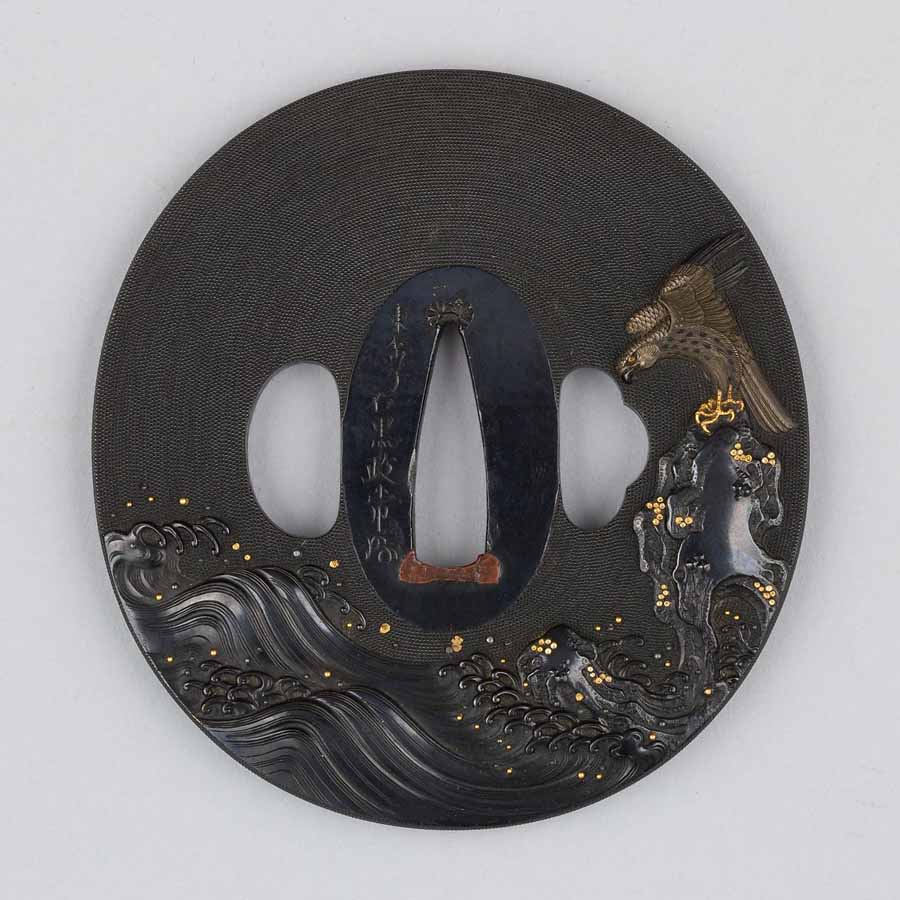
Sword Guard (Tsuba), late 18th–early 19th century, inscribed by Ishiguro Masatsune, copper-gold alloy (shakudō), copper-silver alloy (shibuichi), gold, copper
Samurai Splendor: Sword Fittings from Edo Japan
The Metropolitan Museum of Art
Recently opened–Spring 2024
After almost a century and a half of near-constant civil war and political upheaval, Japan unified under a new ruling family, the Tokugawa, in the early 1600s. Their reign lasted for more than 250 years, in an era referred to as the Edo period, after the town of Edo (present-day Tokyo) that became the new capital of Japan. The Tokugawa regime brought economic growth, prolonged peace, and widespread enjoyment of the arts and culture. The administration also imposed strict class separation and rigid regulations for all. As a result, the ruling class—with the shogun as governing military official, the daimyo as local feudal lords, and the samurai as their retainers—had only a few ways to display personal taste in public. Fittings and accessories for their swords, which were an indispensable symbol of power and authority, became a critical means of self-expression and a focal point of artistic creation.
This installation in the Arms and Armor galleries explores the luxurious aspects of Edo-period sword fashion, a fascinating form of arms and armor rarely featured in exhibitions outside Japan. It presents a selection of exquisite sword mountings, fittings, and related objects, including maker’s sketchbooks—all drawn from The Met collection and many rarely or never exhibited before.
